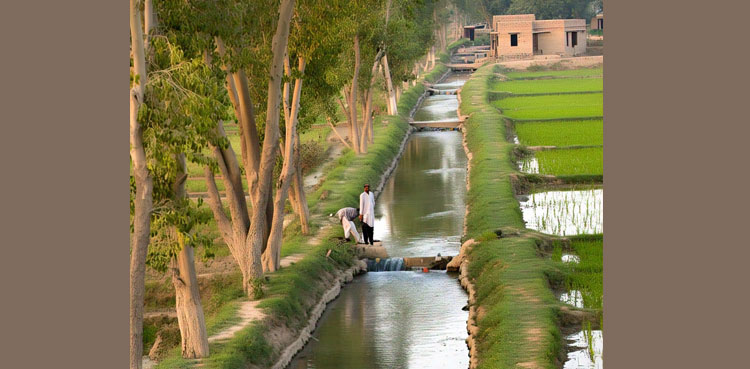Friday, June 27, 2025, was the day when the Swat River, set in the stunningly lovely Swat Valley—Pakistan’s very own “Switzerland”—transformed from a peaceful lifeline into a ruthless agent of devastation. A flash flood struck suddenly, driven by incessant monsoon rains, claiming at least 12 lives, including those of innocent children and loving family members, along the busy Mingora Bypass and the idyllic Fizagat picnic ground.
The victims, mostly from two extended families who had journeyed from Sialkot and Daska/Mardan to bask in the valley’s splendor, were caught unprepared as the river’s waters surged with terrifying speed. Names like Umda (18), Muhammad Ayan (7), Rubina (45), Sharmeen (16), Tazmeen (18), Aima (10), and Merab (17) now echo as symbols of profound loss, their dreams and laughter silenced forever. This tragedy, far from a mere act of nature, was a heart-wrenching culmination of climate change, systemic neglect, and human greed. It is a wound that demands we listen, learn, and act to ensure no more families endure such sorrow.
A Valley Betrayed by Climate and Neglect
Swat Valley, with its emerald forests, shimmering lakes, and the life-giving Swat River, has long been a haven for weary souls seeking solace in nature’s embrace. Yet, beneath its beauty lies a growing fragility, worsened by a warming planet. The summer of 2025 brought unprecedented heat, melting Upper Swat’s glaciers at an alarming rate, swelling the river’s flow unpredictably. A local climate journalist described the heat as suffocating, a sign of a planet in distress. The National Disaster Management Authority (NDMA) had warned of “very high” flood risks, including the threat of Glacial Lake Outburst Floods (GLOFs), as monsoon rains collided with western weather systems. Pakistan, ranked the most vulnerable nation on the 2025 Climate Risk Index, faces warming nearly twice the global average, a grim reality that turned a rainy day into a deadly deluge. The memory of the 2022 floods, which devastated 33 million lives, should have been warning enough, yet the Swat River tragedy reveals a nation still unprepared for the climate crisis’s wrath.
A System That Failed Its People
The heartbreak of June 27 was not just nature’s doing but a failure of those entrusted to protect. The Provincial Disaster Management Authority (PDMA) had declared a “very high alert,” yet no timely warnings reached the families picnicking by the river. An AI-powered Flood Early Warning System (FEWS), launched with hope in October 2024, stood silent when it mattered most, its sensors and cameras failing to translate data into lifesaving alerts. Section 144, meant to keep people from danger zones, was declared but never enforced—no barricades, no patrols, no urgent SMS alerts to warn of the rising waters. The District Disaster Management Plan (2015-2020) and national policies, though well-crafted, gathered dust, their promises unfulfilled by a system mired in reactivity. After the tragedy, the government banned swimming and suspended four officials, but these measures, like bandages on a gaping wound, came too late for Umda, Ayan, and the others.
The Cost of Greed and Environmental Ruin
The Swat River, once a pristine artery of life, has been battered by human hands. Illegal sand and gravel mining, banned in November 2024 but continuing under the cover of night, carved deep pits in the riverbed, destabilizing its flow and creating deadly traps. Politically connected encroachers built hotels and restaurants along the Mingora Bypass, fencing off public riverbanks for profit and choking the river’s natural path. Deforestation in Swat’s upper valleys, driven by illegal logging, stripped away nature’s defenses, increasing runoff and erosion that fed the flood’s fury. Unregulated tourism, meant to bring prosperity, left behind piles of plastic waste and polluted waters, as untreated sewage from hotels and industries poisoned the river. These acts of greed and neglect turned a natural wonder into a ticking time bomb, robbing families of their loved ones and the valley of its soul.
A People Unaware of Peril
Perhaps most heartbreaking was the innocence of those by the riverbank, unaware of the danger lurking in the rising waters. Social media captured families standing perilously close to the surging river, drawn by its deceptive allure, unaware of its lethal power. The lack of robust, multilingual awareness campaigns left tourists and locals alike blind to the risks of flash floods, especially in a climate-altered world. This tragedy reveals a deeper cultural complacency, where the river’s beauty overshadowed its potential for destruction. The absence of clear, persistent warnings allowed families to see the Swat River as a harmless attraction, a misjudgment that cost lives and left communities in mourning.
A Path to Healing and Resilience
To honor the lives lost and protect future generations, Swat must embrace a future rooted in resilience and care. First, disaster risk reduction must become a lifeline, not a promise. The FEWS must be fully operational, delivering real-time alerts through radio, TV, and phones in languages everyone understands. Small dams, diversion channels, and reinforced riverbanks, as outlined in the Khyber Pakhtunkhwa Integrated Water Resource Management Strategy, can tame floodwaters and protect communities. Strict zoning laws must keep tourist hotspots safe, guided by seasonal risk maps.
Second, the fight against illegal activities must be relentless. The government’s post-tragedy ban on mining and anti-encroachment operations must be sustained, with drones and satellite imagery ensuring no violator escapes justice. Protective barriers and restored public access to riverfronts can reclaim the Swat River for all, not just the powerful few.
Third, sustainable environmental management is the valley’s heartbeat. Reforestation, soil conservation, and strict water quality standards can heal the river, while decentralized wastewater treatment can curb pollution from tourism and industry. Community grants, like those in the Integrated Flood Resilience and Adaptation Project, can empower locals to restore their watersheds.
Finally, tourism must become a force for good. Eco-tourism policies, walking treks, and responsible visitor guidelines can preserve Swat’s beauty. Multilingual campaigns and school curricula can teach river safety and environmental stewardship, fostering a culture of respect for nature. Empowering communities through participatory planning and alternative livelihoods, as seen in WWF-Pakistan’s Indus Delta work, can reduce reliance on illegal activities and make locals stewards of their land.
Lessons from a Wounded World
Global successes offer hope. The Rhine River, once a polluted wasteland, was reborn through decades of cooperation and investment, now teeming with salmon. The Elwha River in the USA, freed from dams, saw salmon return within a year. In Pakistan, the Sindh Flood Emergency Rehabilitation Project rebuilt resilient homes for millions, while WWF-Pakistan’s mangrove restoration in the Indus Delta shows the power of community-led conservation. These stories remind us that healing is possible with commitment, collaboration, and a vision for the future.
A Promise to the Lost
The Swat River tragedy is a wound on the heart of Pakistan, a reminder of lives cut short and dreams swept away. It is a call to action for a nation to rise above apathy and greed, to honor Umda, Ayan, and all those lost by building a Swat that is safe, sustainable, and cherished. This demands unwavering political will, robust institutions, and a collective embrace of responsibility. Let this tragedy be the turning point where Pakistan chooses resilience over regret, ensuring that the Swat River flows not with sorrow, but with hope for generations to come.









